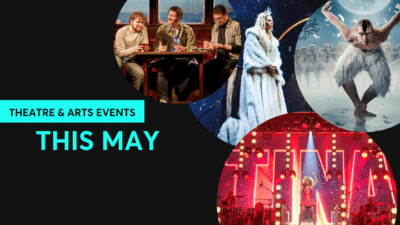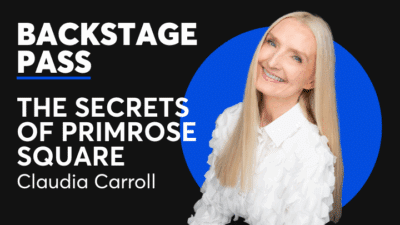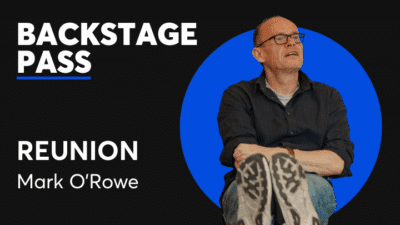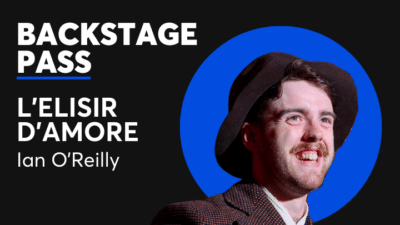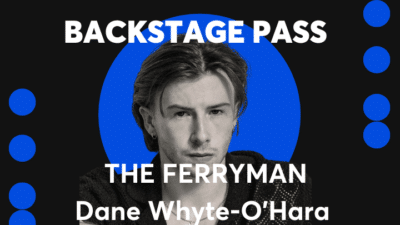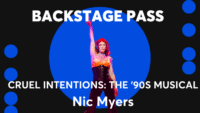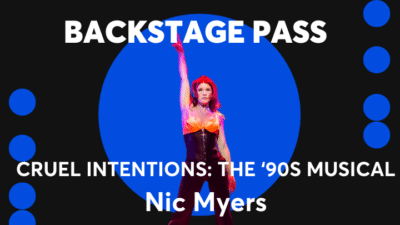Theatre
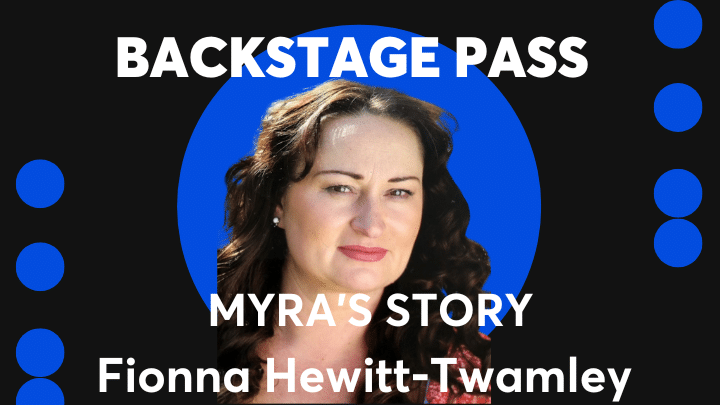
Interview
Backstage Pass: Fionna Hewitt-Twamley – Myra’s Story
Following performances to 150,000 theatre goers across the world, Myra's Story comes to the Gaiety Theatre running until Saturday 10 May 2025.
Myra’s Story follows the life of a middle-aged homeless alcoholic living rough on the streets of Dublin. Myra recreates her backstory, playing all the larger-than-life Dublin characters, acting out all the hilarious/tragic/heartbreaking events in her life that have taken her to this pitiful state.
We spoke with actress Fionna Hewitt-Twamley about preparing to play 16 characters, impromptu dancing with audience members and the message she hopes audiences take from the show.
What should audiences know about the show going in, if anything?
There’s plenty actually, they should be aware there’s a lot of tragic contact in it. There is Dublin wit and language, and plenty of that too. When they come in to see Myra, they’re going to be taken on a rollercoaster of a journey that involves the life retrospectively told of Myra, who has gone through a lot in her short life, with tragic consequences. You hear the sobs, you hear the laughs, because it’s not a misery fest. There are funny moments in it as they literally love to laugh out loud because some of the moments are so harrowing, so it takes them on a big roller coaster of a journey that lasts. It’s not something that they walk outside after Myra’s Story and they just drop, like you come out of something, and say, “Oh, that was great” and then you tend to forget it. Myra’s Story is not the kind of story that you forget.
Did you feel intimidated by the role when you first took it on?
Absolutely not. I was challenged 100%. I had received the script and I had been nominated for an IFTA. It was that night that I received the script, and I went home early to read it a second time and what I saw in it was the potential.
There’s 16 characters, that I play in it, male, female and child, and I thought it’s a great challenge as an actor, great showcase as an actor as well. But I also saw the charity element that could be brought into it, which was a huge factor for me. I just thought it was a brilliant story, and I thought it was well written. I thought I can bring something to this. It didn’t intimidate me, no.

How do you even begin to rehearse playing 16 different characters?
Well, first of all, you have to break them down. So it’s like anything, you breakdown the script and you see who they are, who they are in relation to Myra, all these other characters, and then you have to give them an identity. It has to be a full and thorough background investigation into who these characters are, how they sound, what their purpose is in the script. And that all affects the physicality of each character, and it affects the voice, the sound of the voice, the depth of the voice, and because the majority of characters are actually male, it’s reaching those depths. And then after that, it’s just pure repetition. I record it, and I play the script over in headphones and listen to it that way in each character.
You first played Myra in 2018 – how has your relationship with the story evolved?
It’s funny. A lot of people would think, you know, over seven years, does it go in any way stale for me? Does it become something that is just mundane, monotonous, the same thing day after day, the same thing? But in fairness, it doesn’t, because every day, right up to last night, which was opening night in the Gaiety, you find something different, in something that a thought appears out of nowhere when you’re saying a line, that you think that could be a different intent or purpose in that line, or could be delivered slightly different to give a different intent. And I’m constantly looking for that, and even over seven years, you think I would have interrogated the script to the point where there was nothing left to find, but that’s not the case.
When you think back to that first run at the Edinburgh Fringe, are there any standout memories?
Well, for me, I remember standing out in the wings and looking skyward and saying, “Give me a dig out here. Those of you are, you know, looking over me and minding me.” My mother was there, and it would have been the last time my mother saw the production.
I was I knew it was good, but the reaction from the audience, the very first time, I barely had time to say the last word, and they were on their feet. Lucky for me, that tradition, I suppose, has never broken, and I haven’t missed a standing ovation yet in seven years. So it stands out for all the right reasons, because it was my first introduction to how it landed with the audience, which I had hoped, but I really didn’t expect it to be as big as it was.
What was it like for you to win the Bobby Award?
Yeah, that was a shocker. That was just at the end of COVID. For the first three shows, they had a seat and two seats apart, and it had been very strange playing that way, because people were actually afraid to laugh. So at the end of the run, then I thought, I’ve done Edinburgh now it’s finished, good stuff, going home, and I just see a whole group of people to my left making their way onto stage. I genuinely didn’t know what was happening. Then I recognised one of the guys, and I thought, “Oh, I didn’t realise that I was even in the running for it.” It was a huge accolade. It was…it was a lovely moment, actually. And it was lovely to stand there and think that people had taken the time to vote as well with Broadway Baby and to say, you know, this is who we want as our shows of the Fringe. So it was lovely, very, very nice. It was memorable.
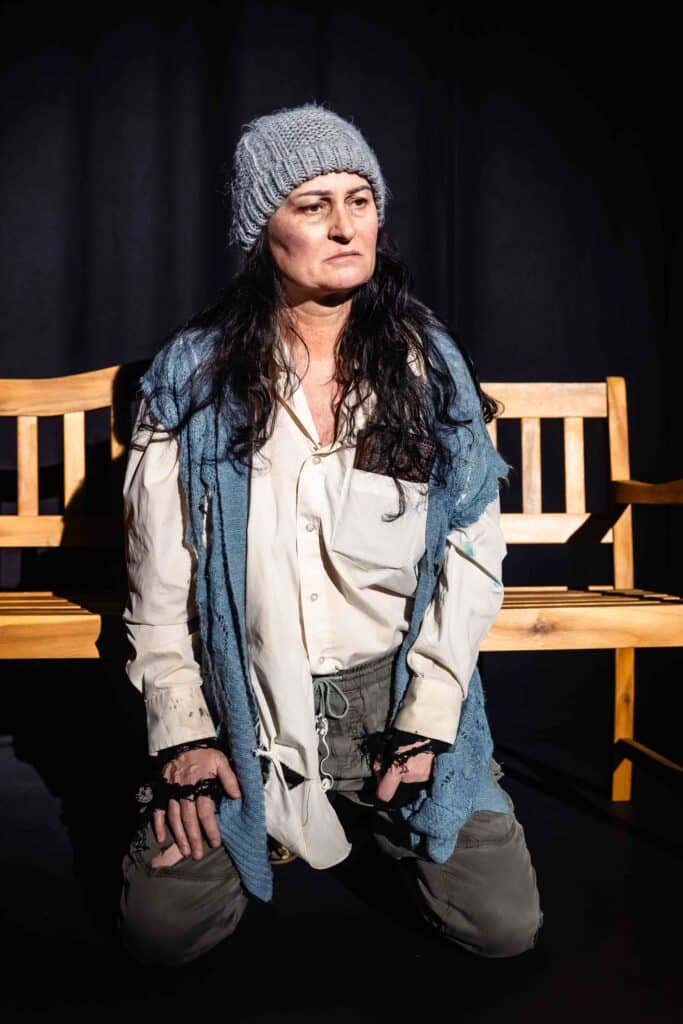
As the play is set in Dublin, is it different performing in front of a Dublin audience?
Yes and no. No, in the sense that the content remains the same and the delivery would remain the same except it would be pacier. The reason it’s would be pacier is because when you’re in the UK I tend to slow it down a slight bit so that they catch every word. In Dublin I don’t need to do that because they catch every word.
The difference being their reactions, Dublin crowds, they get behind it. They really, really get behind it. The laughs are louder. They’re more raucous, they’re more into it in the sense of, I remember that, or I remember a woman across the road just like that.
The funny comments you know that you get, especially last night, it was like “I could have put a name on all of those characters, because they were on my road, they lived on my street and whatever.” So it is different, but it’s lovely being at home and playing to an audience that you can say, “Guys, this is Myra’s Story. This is your story that is a hit in all these other countries, and it’s coming home now. Take it in.”
Particularly because I can be outside here to see the homelessness, and, you know, the people who have addictions, who are literally left to rot on the streets. So, yeah, it makes a difference to me.
Have you gotten any particularly interesting audience reactions to the play?
Yes, last night, for example, there was a lady and she was in the front row, and she just kept saying, “I love you.” You know, it’s lovely to hear that. But at the same time, you’re thinking, “Can you love me when I’m saying the last line?”.
There’s a bit of a competition going on on Facebook for the amount of times that it has been seen by certain people in countries, and they’ll be saying, you know, “I’ve seen it nine times, but I’ve seen it 10 times, and I’ve seen it in four different venues, and I’ve seen it over six different years, and I’ve traveled.” I’ve had ladies that have traveled from Scotland to Ireland to catch it while it was in Ireland. And you think to yourself, “Really, you did that?”
It’s the love that’s thrown back at you at the end of the show, that you realise that these people are hanging on every word. I can see the majority of people while I’m on stage. I can see probably 10 rows back, I can see their facial expressions. And there’s times when you just don’t hear a sound, even a breath in the audience, and you see their faces, and they’re hanging on every word. So that’s a common thing, but there have been funny ones where, you know, ladies have shouted out things, or people think that it’s interactive, that, you know, it’s like TV, that you can shout something to your friend. “Oh, wait ’til you see this bit coming up, what ’til you see what happens to her.” You know? And that happens quite a bit, because the fourth wall is broken, and they do tend to think, oh, well sure, I can just answer that, which is kind of funny, and I just go with that. I’ve had audience members, one got up on stage to dance with me. Found her way up. I danced with her and escorted her back to her seat and continued the show.
What do you want audiences to take away from this story?
One big thing. That is to change their perspective on how they see homelessness and homeless people. Seeing it as a lifestyle choice, and seeing it as something that people can just lift themselves out of by themselves and instead of looking down on the homeless as we pass them, we should spare a thought that they have a backstory too, a family, a home, a community. Possibly had a job, children, and all those things and a trauma caused them to be where they are today. And it’s not a simple lifestyle choice.





